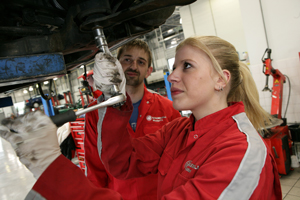 Tim Richards explores the dangers of failing to protect the integrity of your products down the supply chain and how you can safeguard against them.
Tim Richards explores the dangers of failing to protect the integrity of your products down the supply chain and how you can safeguard against them.
Exceptional customer service and a strong, recognisable brand identity can create a stellar reputation. Most would agree, though, that a good quality product is critical. In the current environment, can a company simply sit back and let a product move from design to end-consumer without taking steps to ensure the product is tamper-free?
Sogefi, a manufacturer of engine filtration, air intake and cooling systems, says supply chain tampering was not a reason for the development of its new sealed packaging for its cabin filters, but it’s certainly a fringe benefit should anyone have been tempted to replace one of its products for another somewhere along the line.
The market is also used to seeing sealed boxes for braking products, among others, but should more be done to safeguard the integrity of components?
Tampering is generally referred to as the deliberate altering of a product – either subtle alteration of the contents or even the outright theft of the internal product, usually with the packaging left intact.
There is no single solution to ensuring that assets are tamper-proof, but the issue of security is often low on a company’s agenda.
Faith only goes so far
Having faith in your employees is not a replacement for having adequate internal security mechanisms. A Global Fraud Report undertaken by Kroll reported that 60 percent of fraud affecting companies in 2011/12 was carried out by employees. When recruiting, make sure all new staff are vetted.
Tampering activity can be very hard to spot and you may find the full financial repercussions are evident only when it is too late. It is legal to carry out credit, national insurance and criminal record checks, and all information given to you by an employee should be verified. This won’t reveal whether or not your employee is likely to tamper, but at least the relationship can begin with full disclosure.
The repercussions of employee tampering can be devastating. An employee at a supermarket in Michigan injected 1700 pounds of packaged beef burgers with insecticide in an attempt to get his supervisor into trouble. Fortunately there were no fatalities, but more than a hundred people became very ill. The employee was given a nine-year custodial sentence, but the company’s reputation was ruined.
One of the easiest steps to take is to consider tamper-evident product packaging. Even relatively recently, legal documents were bound with a wax seal to show that no other person had interfered with the content.
Product packaging has a big job to do. It has to contain and protect the product, as well as sell the brand, communicate and inform the consumer and be convenient. When balancing all these characteristics, perhaps it’s no surprise that being tamper-proof is not always at the forefront of package design.
Security labels are often used, designed to leave no visible residue on the surface. Some labels can indicate evidence through supported technology of any attempt to remove the label. This can alert a company to potential tampering and enable them to make investigations before any major losses have occurred. Tampering can be an impulsive action, so the longer it takes, and the harder it is for a tamperer to access a product, the more likely that they will give up and move on.
The Chicago Tylenol case in 1982 is a prime example of when tampering has dramatic effects. Seven people lost their lives as a result of tamperers replacing Tylenol (one of the leading-brand paracetamol products in the US) with potassium cyanide before the end-sale. The case is still unsolved, but resulted in tough legislation tackling tampering in the US. The Pharmaceutical Association of Great Britain followed suit issuing Guidelines on Security Packaging.
Assets are extremely vulnerable during any delivery process. Attacks are becoming increasingly common as organised criminal gangs are targeting lorries carrying high value assets. Vehicles parked in unlit lay-bys are key targets. Recent figures indicate that theft of goods in transit is costing businesses in Europe in excess of £6.6bn a year.
There are a variety of safeguards which companies should consider implementing in order to avoid the significant financial implications of tampering during transit. When contracting a specialist haulage company, it is important to carry out full background checks on the haulage company.
Well-established, reputable haulage companies are likely to understand the importance of handling valuable goods with care and precision. Companies should beware of people tipping off or bribing security officers and drivers and so it is important to carry out verification checks on the haulage company’s employees, for example by checking licences and references of the drivers.











Go to comments